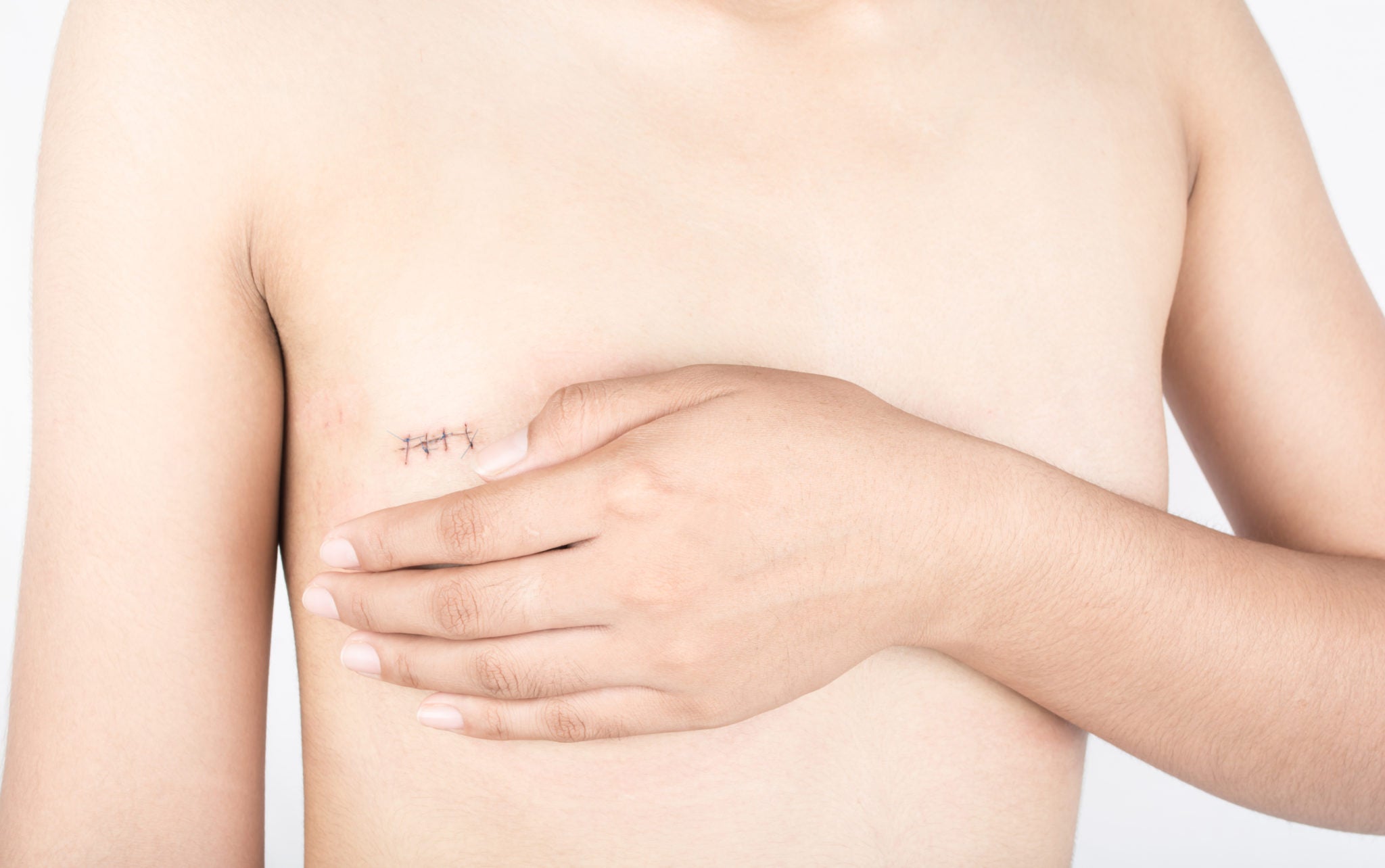

If you’ve had surgery as part of your cancer treatment, you’ll also have to deal with an unfortunate consequence – surgery-related scars..
Scars are a natural part of the body’s healing process, but they can cause irritation and some find them unsightly. Thankfully, there are lots of ways to help improve the texture and appearance of your scars over time.
Whether you’ve had a mastectomy, prostatectomy or biopsy, we look at s why we get scars, the different types of cancer surgery scars and the best scar treatment after surgery.
What is a scar?
Scar tissue forms as part of the healing process after a skin injury. A scar is a fibrous tissue made of collagen that replaces the injured skin.
The extent of a surgical scar has much to do with genetics, age, the type of surgery, and whether or not your skin has been previously radiated. Just as no two surgeries are identical – neither are the outcomes.
What cancer treatments cause scarring after surgery?
- Surgery
- Radiation therapy, or radiotherapy
Scars after breast surgery
Nearly every woman who has breast surgery, whether it’s a lumpectomy, mastectomy – or sometimes even a biopsy – will find herself dealing with scar tissue or keloids after the wounds have healed.
After breast cancer surgery, wound healing is helped by the formation of new collagen for around three months. The blood supply to the area increases, causing the scar to become raised, lumpy and red. Your scar(s) may feel tight and tender and you may not be able to wear a bra or anything that puts pressure on the affected area.
Scars after an abdominal hysterectomy
Surgery for ovarian cancer is usually quite a big operation. Your surgeon (gynaecological oncologist) needs to make sure that they remove as much of the cancer as possible.
Most women with ovarian cancer will have surgery to remove:
- Both ovaries and fallopian tubes
- The womb, including the cervix
This operation is called a total abdominal hysterectomy (TAH) and bilateral salpingo-oophorectomy (BSO). During an abdominal hysterectomy, an incision will be made in your abdomen (tummy). It will either be made horizontally along your bikini line, or vertically from your belly button to your bikini line.
Scars after a prostatectomy
There are two main ways to do an open (incision) operation for prostate cancer: Radical retropubic prostatectomy and radical perineal prostatectomy.
- Radical retropubic prostatectomy: For this operation, the surgeon makes an incision in your lower abdomen, from the belly button down to the pubic bone.
- Radical perineal prostatectomy: In this operation, the surgeon makes the cut in the skin between the anus and scrotum (the perineum).
Is there a cure for scars after cancer treatment?
There isn’t a treatment that can remove scars completely, but there are some things that may help reduce them or improve their feel and appearance.
What can I use to help heal my scars?
Silicone gel sheets and silicone gel may help to heal a scar, reducing its size and colour, and making it feel softer. The sheet or gel covers the scar and moisturises it.
What’s interesting is that one person will swear by a product they’ve used, while another will say they have used it to no avail. This illustrates the basic fact that everybody (make that every body) is unique!
Also, it’s really important not to use any products (other than those provided or approved by your doctor) on the surgical area until you’ve been given the green light by your healthcare team. It’s essential for the surgical site to be completely healed before you begin trying to find ways to reduce or eliminate scars.
Here are some of the best scar gels our Live Better With community recommends:
- Kelo-Cote: Kelo-cote scar gel is a patented topical silicone gel for the management and prevention of scars. It helps soften, flatten and smooth raised scars whilst maintaining the moisture balance and elasticity of the adjacent skin. Kelo-cote gel self-dries within 4-5 minutes to a waterproof gas permeable membrane that acts like an extra layer of skin. It also reduces discolouration, redness and associated itching, pain and discomfort of scars.
- Dermatix: Dermatix Scar Gel is a doctor-recommended silicone gel which effectively reduces scarring. It’s been clinically tested and proven to soften, flatten and smooth scars, and relieve the itching and discomfort associated with them. Dermatix Scar Gel is a topical silicone gel that is transparent, self-drying and maintains the skin’s moisture balance. Dermatix also aids the management of scarred skin surfaces resulting from surgery, burns, and other injuries. The gel is easily applied to all areas of the skin, including the face, joints, and flexures, and dries rapidly to form an invisible “sheet”.
Some holistic techniques have also been shown to ease pain associated with scars. These include:
- Acupuncture
- Chiropractic therapy
- Hypnosis
- Massage
- Music therapy
- Reiki
- Shiatsu
For more information on skin care after cancer treatment, you can read our handy ‘Skin Things‘ guide.



